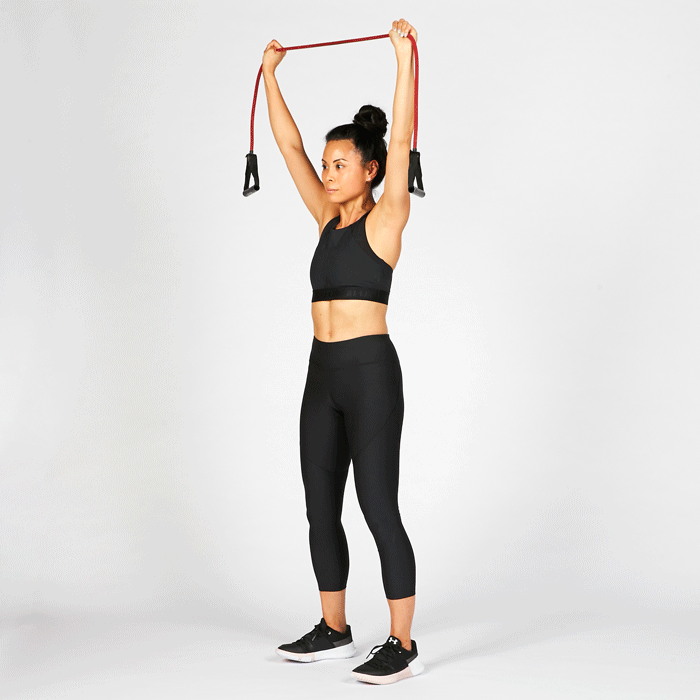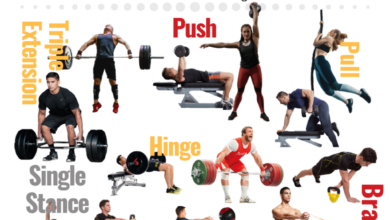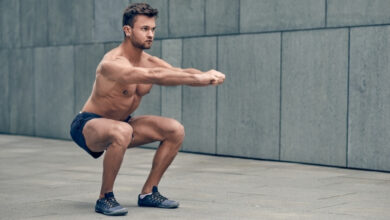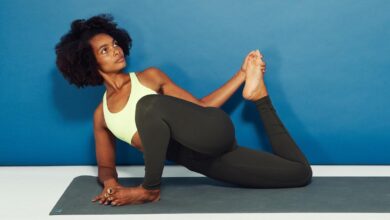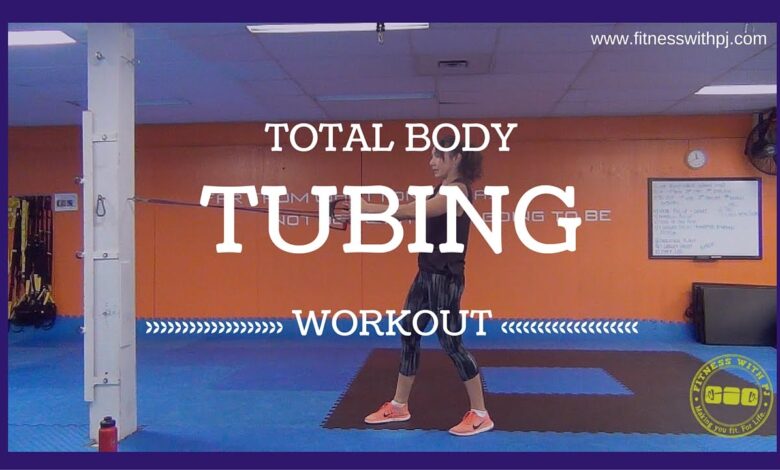
Your 9 Minute Total Body Resistance Band Workout
Your 9 minute total body resistance band workout is a quick and effective way to get a full-body workout at home or on the go. Resistance bands are a versatile and portable piece of equipment that can be used to target all major muscle groups.
This workout is designed to be challenging yet achievable for all fitness levels, and you can easily adjust the intensity by choosing the appropriate resistance band and modifying the exercises.
This workout is perfect for busy individuals who want to squeeze in a quick and effective workout. It requires minimal equipment and can be done anywhere, making it convenient and accessible. You’ll be surprised at how much you can achieve in just 9 minutes! Whether you’re a beginner or a seasoned athlete, this workout can help you build strength, improve flexibility, and boost your overall fitness.
Get ready to feel the burn and see results!
Introduction
Resistance bands are versatile and affordable fitness tools that can provide a challenging workout for people of all fitness levels. Resistance band workouts are a great way to build strength, improve flexibility, and enhance your overall fitness. This 9-minute total body resistance band workout is designed to target all major muscle groups, helping you achieve a full-body workout in a short amount of time.
My 9-minute total body resistance band workout is a great way to squeeze in a quick and effective workout, especially when you’re short on time. But remember, weight loss is a journey, and exercise is just one piece of the puzzle.
To truly see results, you need to consider the bigger picture, like making those small but impactful changes to your lifestyle. Check out this article on 10 Simple Changes That Lead to Weight Loss for some great tips.
Once you’ve got those basics in place, you’ll be ready to take your 9-minute workout to the next level and see even better results!
Importance of a Warm-up and Cool-down
A warm-up is essential before any workout to prepare your body for physical activity. It increases your heart rate, improves blood flow to your muscles, and helps prevent injuries. A cool-down after your workout helps your body recover and reduces muscle soreness.
It allows your heart rate to gradually return to normal and helps your muscles relax.
My 9-minute total body resistance band workout is all about efficiency, leaving me energized and ready to tackle the day. After a good sweat, sometimes I crave a treat, and that’s where 11 healthy pizzas under 400 calories come in.
They satisfy my pizza cravings without derailing my fitness goals. It’s all about balance, right? And with a quick and effective workout like this, I can definitely afford a slice (or two) of pizza guilt-free!
Workout Routine
This resistance band workout routine is designed to target major muscle groups throughout your body. Using resistance bands provides a versatile and effective way to challenge your muscles and improve strength, endurance, and flexibility.
Exercises and Descriptions
This workout routine consists of nine exercises that will engage your legs, core, back, chest, and arms.
| Exercise | Description | Sets | Reps |
|---|---|---|---|
| Banded Squats | Stand with feet hip-width apart, band around both legs above knees. Lower hips as if sitting in a chair, keeping back straight and core engaged. Push through heels to return to standing. | 3 | 10-12 |
| Banded Glute Bridges | Lie on back with knees bent, feet flat on floor, band around thighs just above knees. Lift hips off the floor, squeezing glutes, keeping back straight. Lower hips back down slowly. | 3 | 10-12 |
| Banded Lateral Lunges | Stand with feet together, band around both legs just above ankles. Step to the side with one leg, bending that knee and keeping other leg straight. Push through heel to return to starting position. Repeat on other side. | 3 | 10-12 per side |
| Banded Plank | Start in a plank position with forearms on the ground, band around wrists. Engage core and keep body in a straight line from head to heels. Hold for 30-60 seconds. | 3 | 30-60 seconds |
| Banded Bent-Over Rows | Stand with feet hip-width apart, band anchored under one foot. Bend at the hips, keeping back straight, and grab band with both hands. Pull band towards chest, squeezing shoulder blades together. Slowly return to starting position. | 3 | 10-12 |
| Banded Chest Press | Lie on back with knees bent, feet flat on floor, band anchored behind you. Hold band with both hands, elbows bent at 90 degrees. Press hands forward until arms are straight, then slowly return to starting position. | 3 | 10-12 |
| Banded Bicep Curls | Stand with feet shoulder-width apart, band anchored under one foot. Hold band with both hands, palms facing up. Curl band towards shoulders, keeping elbows close to body. Slowly lower band back down. | 3 | 10-12 |
| Banded Tricep Extensions | Stand with feet shoulder-width apart, band anchored under one foot. Hold band with one hand, elbow bent at 90 degrees, hand behind head. Extend arm straight back, then slowly return to starting position. Repeat on other side. | 3 | 10-12 per side |
| Banded Overhead Press | Stand with feet shoulder-width apart, band anchored under one foot. Hold band with both hands, elbows bent at 90 degrees. Press band overhead until arms are straight, then slowly return to starting position. | 3 | 10-12 |
Resistance Band Selection and Usage
Choosing the right resistance band is crucial for maximizing your workout’s effectiveness and minimizing the risk of injury. There are several types of resistance bands available, each with its unique characteristics and benefits. Understanding the different types and how to select the appropriate band for your fitness level and goals is essential for a safe and rewarding workout.
Types of Resistance Bands
Resistance bands come in various materials, thicknesses, and lengths. The most common types include:
- Latex Bands:These are the most common type of resistance bands and are made from natural rubber. They are generally affordable and offer a wide range of resistance levels. However, latex bands can be prone to breaking, especially if exposed to excessive heat or sunlight.
- Fabric Bands:Fabric bands are made from woven fabric and are often coated with latex. They are more durable than latex bands and less likely to snap. They are also gentler on the skin and can be more comfortable for certain exercises.
My 9-minute total body resistance band workout is a great way to get a quick and effective workout in, but it’s also important to fuel your body with healthy foods. To make sure you’re getting all the nutrients you need, check out this article on 5 ways to up your vegetable game.
After a great workout and a healthy meal, you’ll be feeling strong and energized, ready to tackle whatever comes your way!
- Thera-Bands:These bands are made from a special type of elastic material that is designed to provide consistent resistance throughout the range of motion. They are often used for rehabilitation and physical therapy.
- Loop Bands:Loop bands are circular bands that are designed to be worn around the legs or arms. They are excellent for strengthening and stabilizing muscles, especially in the lower body.
Choosing the Right Resistance Band
The best resistance band for you depends on your fitness level and goals. Here are some factors to consider:
- Fitness Level:If you are a beginner, start with a lighter resistance band. As you get stronger, you can gradually increase the resistance.
- Workout Goals:If you are looking to build muscle, choose a heavier resistance band. If you are focused on improving flexibility and range of motion, a lighter band may be more suitable.
- Exercise Type:Different exercises require different levels of resistance. For example, exercises that target larger muscle groups, like squats and deadlifts, may require heavier resistance bands.
Proper Resistance Band Usage
To maximize the effectiveness of your resistance band workout and minimize the risk of injury, follow these tips:
- Warm-up:Always warm up your muscles before using resistance bands. This can include light cardio, dynamic stretching, or a few sets of bodyweight exercises.
- Proper Form:Focus on maintaining good form throughout your exercises. Avoid using momentum or swinging the band.
- Controlled Movements:Move the band slowly and deliberately, focusing on contracting your muscles. Avoid jerking or snapping the band.
- Progressive Overload:As you get stronger, gradually increase the resistance of your band. This will help you continue to challenge your muscles and see results.
- Listen to Your Body:Pay attention to your body and stop if you feel any pain.
Modifications and Variations
This workout can be adapted to fit your fitness level and goals. You can make it easier or harder by adjusting the resistance band, modifying the exercises, or changing the number of repetitions.
Adjusting Resistance Band Intensity
The resistance band’s tension can be modified to suit your strength level.
- For beginners, choose a lighter resistance band, which will offer less resistance, making it easier to perform the exercises.
- As you progress, switch to a heavier band to increase the challenge.
- To further adjust the resistance, you can also double up on the band by looping two bands together for increased tension.
Modifications for Beginners
Beginners can make the workout easier by:
- Reducing the number of repetitions per set.
- Increasing the rest time between sets.
- Using a lighter resistance band.
- Modifying the exercises to reduce the range of motion. For example, instead of doing a full squat, you could do a partial squat.
Modifications for Advanced Exercisers
Advanced exercisers can make the workout more challenging by:
- Increasing the number of repetitions per set.
- Decreasing the rest time between sets.
- Using a heavier resistance band.
- Adding more resistance band exercises to the workout.
- Increasing the speed of the exercises.
- Adding weights to the exercises.
Alternative Exercises
If you have any limitations, you can modify the exercises to suit your needs. For example, if you have knee problems, you can avoid exercises that put stress on your knees, such as squats and lunges. Instead, you can do exercises that focus on other muscle groups, such as rows and chest presses.
It is important to listen to your body and stop if you feel any pain.
Safety and Precautions: Your 9 Minute Total Body Resistance Band Workout
Resistance band workouts are generally safe, but like any exercise, there are potential risks of injury if proper precautions aren’t taken. It’s essential to prioritize safety and prevent injuries by understanding common risks and implementing preventative measures.
Common Injuries Associated with Resistance Band Workouts
Injuries can occur due to improper form, overuse, or neglecting proper warm-up and cool-down routines. Some common injuries associated with resistance band workouts include:
- Muscle Strains:These occur when muscles are stretched or torn, often due to sudden movements or excessive resistance.
- Tendonitis:Inflammation of tendons, which connect muscles to bones, can occur due to repetitive motions or overuse.
- Ligament Sprains:These occur when ligaments, which connect bones to each other, are stretched or torn.
- Joint Pain:Resistance band workouts can exacerbate existing joint pain, especially in individuals with conditions like arthritis.
Preventing Injuries, Your 9 minute total body resistance band workout
Here are some tips for preventing injuries during resistance band workouts:
- Proper Form:Maintaining proper form is crucial to ensure that the correct muscles are being worked and to minimize strain on joints.
- Gradual Progression:Gradually increase the intensity, duration, and resistance of your workouts to allow your body to adapt.
- Warm-up and Cool-down:Before starting your workout, perform a dynamic warm-up to prepare your muscles for activity. After your workout, cool down with static stretches to improve flexibility and reduce muscle soreness.
- Listen to Your Body:Pay attention to your body’s signals and stop if you feel any pain. Rest and allow your body to recover when needed.
- Use Proper Equipment:Ensure your resistance bands are in good condition, free of tears or fraying.
Importance of Consulting a Healthcare Professional
It’s essential to consult with a healthcare professional before starting any new workout routine, especially if you have pre-existing conditions or concerns. They can assess your fitness level, identify any potential risks, and provide personalized recommendations.
Nutrition and Hydration
Fueling your body with the right nutrients and staying hydrated is crucial for optimal performance and recovery during your resistance band workout. Proper nutrition can enhance your energy levels, muscle growth, and overall well-being, while adequate hydration helps prevent fatigue, muscle cramps, and dehydration.
Pre-Workout Nutrition
Before your workout, it’s essential to consume a balanced meal or snack that provides your body with the necessary energy and nutrients. This will help you perform at your best and prevent fatigue.
- Carbohydrates:Carbohydrates are your body’s primary source of energy. Choose complex carbohydrates like whole grains, fruits, and vegetables for sustained energy release.
- Protein:Protein is essential for muscle growth and repair. Include lean protein sources such as chicken, fish, beans, or tofu in your pre-workout meal.
- Healthy Fats:Healthy fats, like those found in avocados, nuts, and seeds, provide energy and support hormone production.
Here are some pre-workout meal or snack examples:
- Oatmeal with berries and nuts
- Greek yogurt with fruit and granola
- Whole-wheat toast with peanut butter
- A banana with a handful of almonds
Post-Workout Nutrition
After your workout, it’s important to replenish your energy stores and support muscle recovery. Consuming a balanced post-workout meal or snack can help achieve this.
- Carbohydrates:Replenish your glycogen stores by consuming carbohydrates after your workout. Choose high-glycemic index carbohydrates like potatoes or rice for faster absorption.
- Protein:Protein is essential for muscle repair and growth. Include protein in your post-workout meal or snack to promote muscle recovery.
Here are some post-workout meal or snack examples:
- Chicken breast with brown rice and steamed vegetables
- Protein shake with fruit and yogurt
- Tuna salad sandwich on whole-wheat bread
- A protein bar with a banana
Hydration
Water is essential for optimal performance and recovery during your resistance band workout. It helps regulate body temperature, transport nutrients, and remove waste products.
- Before Workout:Drink plenty of water in the hours leading up to your workout to ensure you are properly hydrated.
- During Workout:Sip water throughout your workout to replace fluids lost through sweat.
- After Workout:Replenish lost fluids by drinking water or an electrolyte beverage after your workout.
“Aim to drink 16-20 ounces of water two to three hours before your workout, and another 8 ounces 30 minutes before you begin.”
Final Conclusion
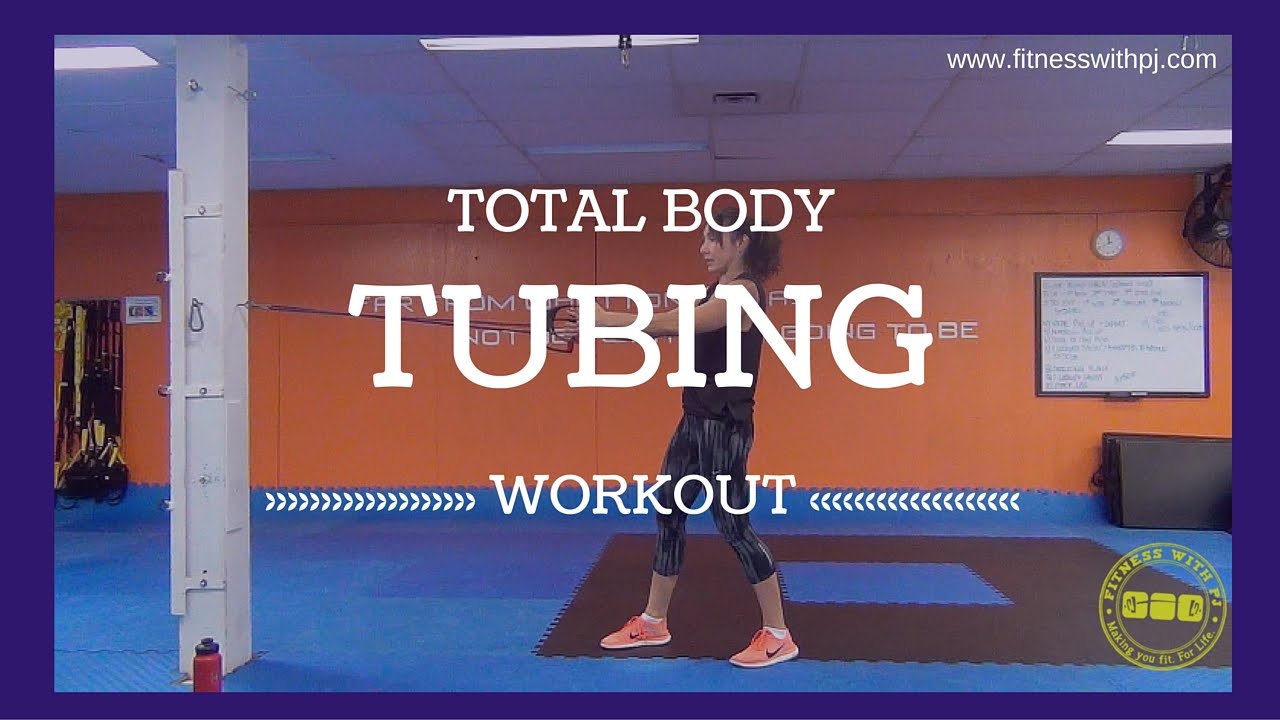
So there you have it, a simple yet effective 9-minute total body resistance band workout. Remember, consistency is key! Aim to do this workout a few times a week to maximize your results. Listen to your body, modify exercises as needed, and most importantly, have fun! If you’re looking for a quick and easy way to boost your fitness, this workout is definitely worth trying.
You’ll be amazed at how much you can achieve in just a few minutes.

